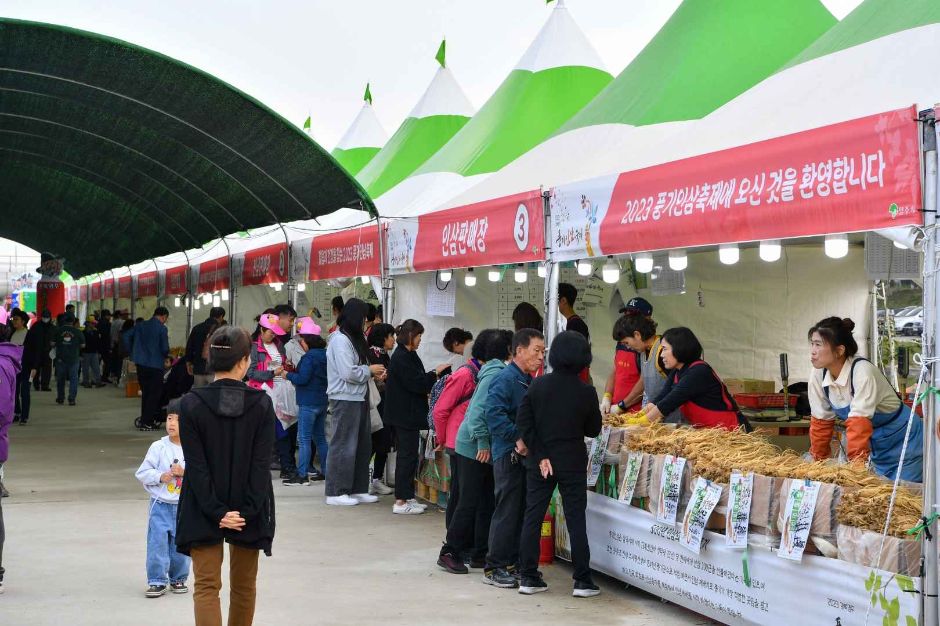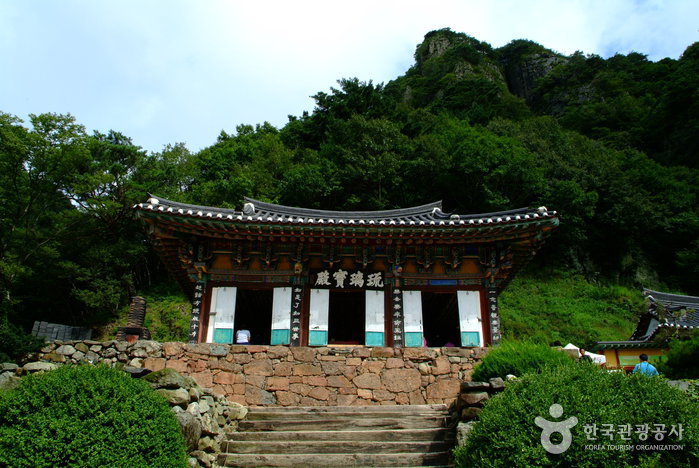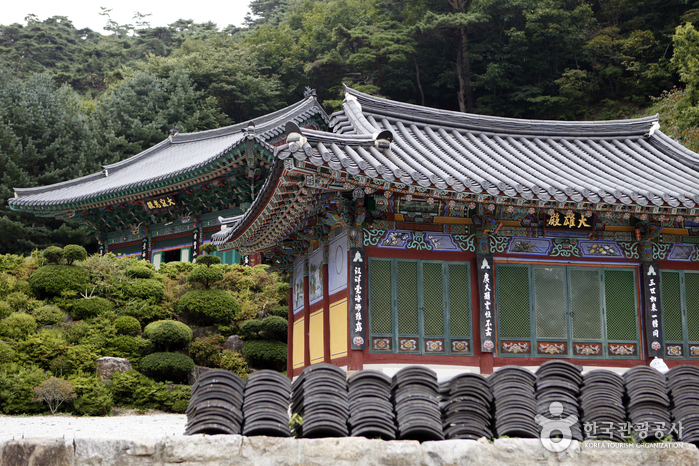Yeongju Punggi Insam Festival (경북영주 풍기인삼축제)
19.3Km 2025-07-11
Seongnae-ri, Punggi-eup, Yeongju-si, Gyeongsangbuk-do
+82-54-639-6612
Ginseng is a well-known traditional Korean medicinal herb. High quality ginseng in Korea is mostly produced in Punggi, a region in Yeongju, Gyeongsangbuk-do, and the place where the Punggi Ginseng Festival takes place. The festival features health-related exhibits and offers opportunities to taste healthy ginseng dishes at the ginseng cooking exhibition. Visitors can also participate in Punggi ginseng-related interesting activities such as making Punggi ginseng wine and peeling ginseng in the traditional Korean way. The festival offers a variety of ginseng products, including fresh ginseng, original ginseng, red ginseng, and ginseng processed foods, which are all grown by local farmers in Yeongju and sold at reasonable prices. Additionally, the festival showcases local specialties and symbols such as ginseng and Yeongju apples through oil lantern displays along Namwoncheon Stream. With so many attractions, visitors are sure to have a great time at the festival.
Bonghwa Cheongnyangsa Temple (청량사(봉화))
19.7Km 2022-12-27
199-152, Cheongnyangsan-gil, Bonghwa-gun, Gyeongsangbuk-do
+82-54-672-1446
Located in Cheongnyangsan Mountain Provincial Park, Cheongnyangsa Temple was built by the great monk Wonhyo in 663, the 3rd year of King Munmu of the Silla Kingdom. According to the principles of feng shui, the area is an ideal place for a temple – with the 12 mountain peaks surrounding the temple like the petals of a lotus flower.
The temple is home to two precious historical remains; one is the board of Yuribojeon that King Gongmin of Goryeo wrote upon and the other is Jibul. Yuribojeon is the building where Yaksa-yorae-bul (the Medicine Buddha Statute) is housed and Jibul is a Buddha statute made of paper that was painted with gold.
At the back of the temple is Bosalbong Peak looking out towards Cheongnyangsan Mountain. A 30-minute walk along the hiking trail will lead the hikers to Eungjinjeon, a hermitage with a beautiful view where the great monk Wonhyo once stayed. Behind Eungjinjeon stands Geumtapbong Peak and the sheer cliffs below. The peak was named Geumtapbong (meaning ‘golden pagoda’ in Korean) since it looks like a nine-story pagoda with pine trees growing around the base. In the autumn, the beautiful red, gold and orange hues of the maple trees are a true sight to behold.
Choamsa Temple - Yeongju (초암사(영주))
19.7Km 2020-03-27
330, Jukgye-ro 315beon-gil, Yeongju-si, Gyeongsangbuk-do
+82-54-633-2322
In search of a great place to build a Buddhist Temple invoking national security, Great Monk Uisang travelled around the country and reached this place. He built a small thatched hut here for a temporary stay and continued his search. Finally, he found a perfect place and built Buseoksa Temple. He also set up another temple in the site where his small thatched hut was and called it Choamsa Temple. Choamsa Temple is located below the valley in the south of Gungmangbong Peak of Sobaeksan Mountain. After the Korean War, the temple building had to be rebuilt, but it managed to preserve some of Provincial Tangible Cultural Asset including Samcheung Seoktap (a three-storied stone pagoda; Tangible Cultural Property 126), Dongbudo (East Stupa; Tangible Cultural Property 128) and Seobudo (West Stupa; Tangible Cultural Property 129).
* Jukgyegugok Valley
The valley stretching from Baejeom-ni to Choamsa Temple is called Jukgyegugok which Sobaeksan Mountain surrounds like a folding screen. Near the valley, one can find famous tourist attractions such as the Sosuseowon Confucian Academy and Buseoksa Temple. Toegye Yi Hwang came up with the name Jukgyegugok inspired by the fantastic scenery of the valley and the beautiful sound of the flowing water.



 English
English
 한국어
한국어 日本語
日本語 中文(简体)
中文(简体) Deutsch
Deutsch Français
Français Español
Español Русский
Русский